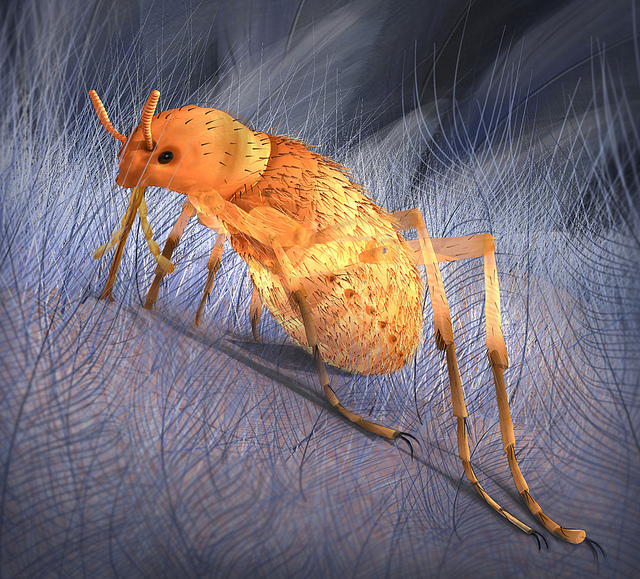These flea-like animals, were similar to modern fleas but 10 times the size of a flea you might find crawling on your family dog – with a proboscis and an extra-painful bite to match. Dinosaurs were likely not amused.
Pseudopulex jurassicus and Pseudopulex magnus had bodies that were more flat, like a bedbug or tick, and long claws that could reach over scales on the skin of dinosaurs so they could hold onto them tightly while sucking blood. Modern fleas are more laterally compressed and have shorter antennae, and are able to move quickly through the fur or feathers of their victims.
Modern fleas have done plenty of damage. Hardly a dog or cat alive has escaped their attack, and they brought mankind such diseases as bubonic plague, which has killed 75 million people.
But those didn't pack a bite that felt like a needle going in.

Artistic impression of Pseudopulex jurassicus, which lived 165 million years ago. Illustration by Wang Cheng, courtesy of Oregon State University
It's possible that the soft-bodied, flea-like insects found in fossils from Inner Mongolia are the evolutionary ancestors of modern fleas, but most likely they belong to a separate and now extinct lineage. All true fleas are adapted to feeding on warm-blooded vertebrates and today 94 percent of the 2,300 known species attack mammals, while the remainder feed on birds. But the unusual characteristics and abilities of the flea-like animals found in the fossils detailed in Current Biology lead scientists to believe their prey were some of the biggest kids on the block – dinosaurs in which they could have fed on the softer skin between scales.
"You wouldn't talk much about the good old days if you got bit by this insect," commented George Poinar, Jr., a professor emeritus of zoology at Oregon State University. "It would have felt about like a hypodermic needle going in – a flea shot, if not a flu shot. We can be thankful our modern fleas are not nearly this big."
Published in Current Biology.






Comments